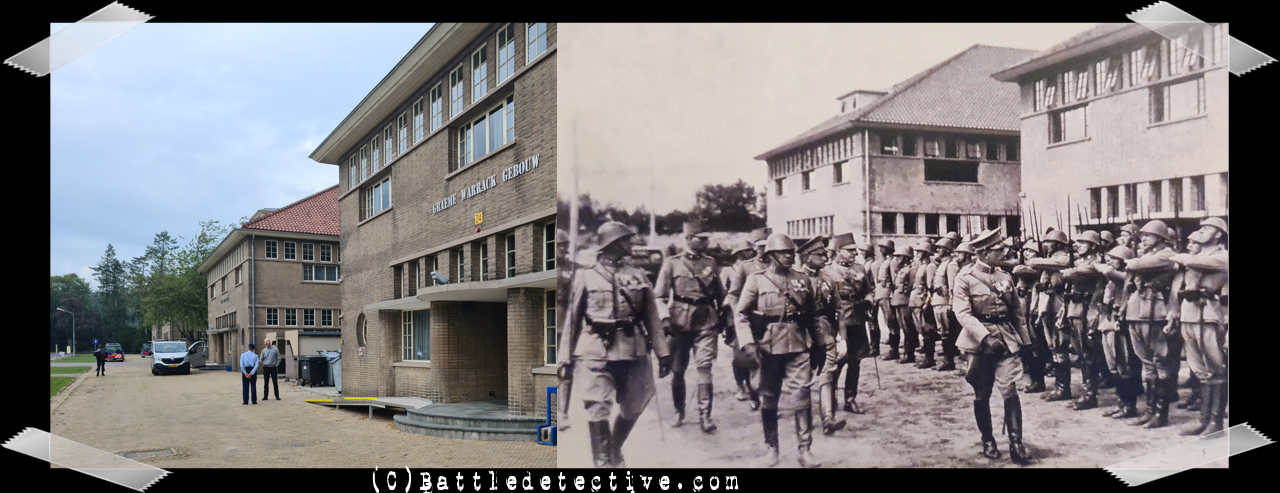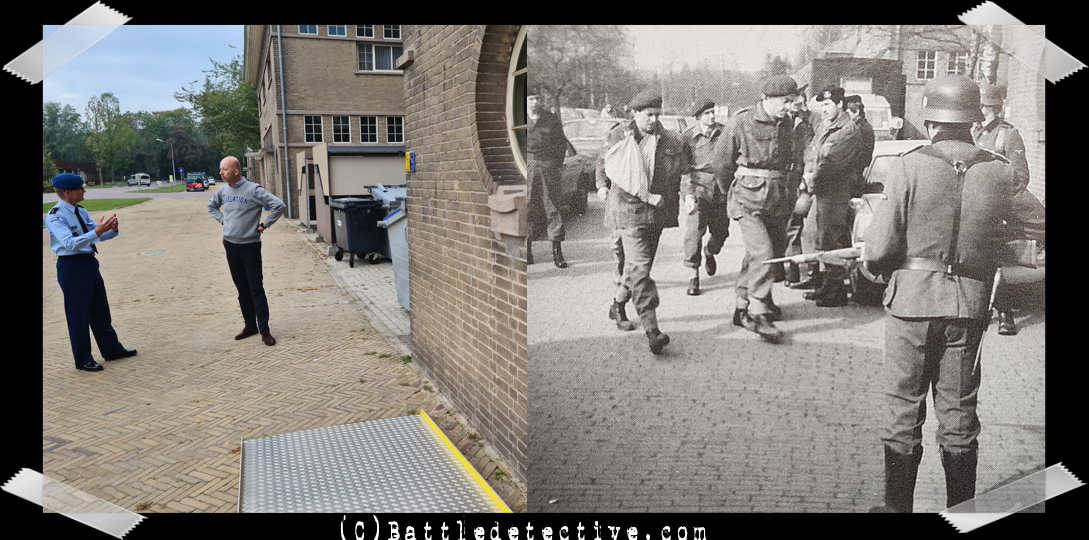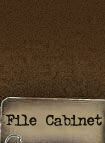 |
| |
|
| |
|
File
No.:

Title:
Location of the escape
hide-out of Colonel Warrack
Investigation made at: Room
8, Building 24 "Graeme
Warrack Gebouw", Royal
Netherlands Army Koning
Willem III Barracks at
Frankenlaan 70, 7312 TG
Apeldoorn, The Netherlands
(52°12'07.5"N 5°55'39.0"E)
Period Covered: 26 SEP-
3 NOV 1944
Date: SEP2020
Case
Classification:
Location of Historic Events
Status
of Case:
Case Closed
|
(click to enlarge)
.jpg)
|
REASON FOR INVESTIGATION
From the 1977 Dutch
publication "Zwevend naar de
Dood" (to death by glider)
by Th. Peelen and A.L.J. van
Vliet (ISBN 90 269 4551 5) this
agency was familiar with the
escape-by-hiding-in-place of
Colonel Colonel Graeme Matthew
Warrack, Headquarters Royal Army
Medical Corps, 1st Airborne
Division, British Army No.:
57723. Warrack had been the
Chief Medical Officer of the 1st
British Airborne Division during
the Battle of Arnhem in
September 1944. After the battle
he had been taken prisoner by
the Germans and under their
supervision established the
Airborne Military Hospital in de
German-occupied Dutch Royal
Netherlands Army Barracks in
Apeldoorn tending to as many as
1750 wounded British and Polish
Airborne soldiers. After he
learned of the Germans' decision
to relocate their prisoners to
POW Camps in Germany, Warrack
decided to escape to friendly
lines. He did this by hiding in
an empty space above a cupboard
in his office for approximately
12 days and then, at night, walk
out the building and the
barracks. After several months
he was able to rejoin the
British Army.
This agency visited Warrack's
office and void space above the
cupboard where the Colonel had
his 'hidey-hole'.
SYNOPSIS: |
|
The story of the escape is best
described in detail in the
recommendation for awarding
Warrack as Officer of the Most
Excellent Order of the British
Empire.
"Colonel Warrack, after
remaining behind to care for the
wounded at Oosterbeek, was taken
prisoner on 26th September 1944,
and was the same day transferred
to Apeldoorn. As senior medical
officer he did everything
possible to ameliorate the
conditions of the Prisoners of
War, and to assist escapers. At
the same time he planned his own
escape, which he proposed to put
into effect immediately prior to
the closing of the hospital.
During the confusion of the main
evacuation of Prisoners of War
on 18th October 1944, he climbed
into a previous prepared
hideout, a hollow space 10 feet
x 3 feet x 18 inches, situated
above two cupboards in his own
room.
A small section of the medical
staff were allowed to remain in
the hospital for a further 4
days, and at Colonel Warrack's
suggestion, his room was used as
the Dental Centre. He was thus
able to leave his hideout for a
few hours each evening until the
departure of the rear party on
26th October 1944.
Whilst the Germans were removing
all equipment, Colonel Warrack
had to remain hidden for a
continuous stretch of 48 hours.
When he emerged to explore the
possibilities of leaving the
building he was seen from
outside, and, unable to reach
his room before the search party
arrived, he hid under a bed in
one of the wards. He was not
discovered and was able to
return to the cupboard. Except
for half an hour each day, he
stayed there until all sounds of
activity had ceased on 1st
November 1944.
Before he could affect his
escape, the building was
occupied as a barracks, the
Commanding Officer of this unit
acquiring the room in which
Colonel Warrack was hidden. It
was not until the evening of 3rd
November 1944 that he was able
to move from the cupboard.
Although the moon was full and
there was a guard on duty below,
Colonel Warrack climbed out of
the window and crawling beside
the perimeter fence, found a
break in the wire. […]…he
finally reached safety on 5th
February 1945."
Source: Recommendation
for Award for Warrack,
Graeme Matthew
Reference: WO 373/64/167
Date of announcement in
London Gazette: 20
September 1945 |
|
Hiding place rediscovered
In 1946, the training center
of the Royal Netherlands
Marechaussee (Military Police)
was established at the barracks,
and there was nothing to hint at
the years that the German
military had occupied the
building. Just as before the
war, Graeme Warrack's room once
again served as an office for
officers. The fact that
buildings 83, 84 and 85 had
housed almost two thousand
prisoners of war had faded into
oblivion. Once again, Graeme
Warrack's closet became a place
for files and piles of paper.
And no-one would ever have known
what had happened in that room
and in the space above the wall
closets. That is until 1969,
when one of the contributors to
Graeme
Warrack's book ["Travel by
Dark"; originally printed by
Harvill Press in 1963; for this
study the 2014 revised and
enlarged edition is used; ISBN
978-90-812703-5-9] was working
in Apeldoorn. He wanted to try
and find Warrack's hiding place.
On the basis of a little sketch
that Warrack had made, it was
easy for him to find the
buildings where the wounded
prisoners of war had stayed, as
well as Warrack's bedroom. In
all those years, nothing had
changed. In 1969, these
buildings served as
accommodation for conscript
members of the Marechaussee in
training. Graeme Warrack's
former bedroom was now the
squadron commander's office. The
commander immediately gave
permission for the office to be
investigated. The ceiling board
in the closet showed clear signs
that it had once been loose.
The two upper planks and the two
screws on the right of the plank
had been removed. This had to be
Warrack's hiding place! On first
inspection, there did not seem
to be anything in the hiding
place, but closer investigation
revealed small traces of
Warrack's stay twenty-five years
earlier: shreds of an English
magazine, half-burnt matches
that Warrack used as pencils,
totally dried out apple cores,
pieces of biscuit, toffee
wrappers.
|
|
(click to
enlarge)
.jpg)
Fig. Toffee wrappers found in
the hidey-hole
Photo from the book" Zwevend
naar de Dood" |
Graeme Warrack Building and
Graeme Warrack Room
In 2009, renovations and
refurbishment work commenced at
the Koning Willem III barracks,
including the former Airborne
Military Hospital. The buildings
were fully adapted to modern
accommodation requirements.
Because of its historical
significance, Graeme Warrack's
room was left intact. What was
more, the room was even given a
special status – the 'exhibition
room'. The room was redecorated,
and both wall closets were
painted in the colors Cambridge
Blue and Maroon, the colors of
the 1st British Airborne
Division. Captain of the Royal
Netherlands Marechaussee Michiel
Tattersall took it upon himself
to transform the room into a
space that would reflect the
period of the Airborne Military
Hospital. This was done by
displaying many original pieces
of British equipment, German and
British medical attributes,
photos, weapons, household
items, etcetera. In the room
there is also a list of the
names of the around 1800
prisoners of war who stayed at
the Airborne Military Hospital
at the time. One of the display
cases shows Dr. Warrack's
decorations. |
|
(click to
enlarge)
_small.jpg)
_small.jpg)
_small.jpg)
_small.jpg)
_small.jpg)
_small.jpg)
Colonel
Warrack's former quarters now
features a permanent exhibition
on the Battle of Arnhem,
the Royal Army Medical Corps and
the Colonel in particular.
_small.jpg)
_small.jpg)
_small.jpg)
Weapons and
ammunition of the British Army. |
|
The space above the wall
closets where Warrack had
hid has of course been kept in
its original state. |
|
(click to
enlarge)
_small.jpg)
_small.jpg)
_small.jpg)
_small.jpg)
The cupboard with Army inventory
number "8b" is left intact
and with the aid of a a ladder
the room above its ceiling can
be viewed.
_small.jpg)
_small.jpg)
_small.jpg)
_small.jpg)
Impression of
the interior of the Colonel's
hidey-hole
with the addition of a mannequin
dressed as the Colonel, a bed
pan and illumination.
|
After the renovations, the
official opening of the former
Airborne Military Hospital was
held on 19SEP2012. The
ceremonial ribbon that was
stretched across the entrance to
the building was cut by Colonel Warrack’s son, Bill
Warrack, who had come from
Scotland with his son in law and
nephew especially for the
occasion. The building has been
called the Graeme Warrack
building ever since.
|
|
(click to
enlarge)
_small.jpg)
_small.jpg)

Building 24 on
Koning Willem III Kazerne
barracks is named
"Graeme Warrack Gebouw".
It features a plaque on the wall
with a protective cover when we
photographed it. |
Source: “Airborne
Military Hospital at the
‘Koning Willem III’
barracks in Apeldoorn 25
September 1944 – 26
October 1944 The Graeme
Warrack Building”.
Publication by the Royal
Netherlands Marechaussee
(www.marechaussenostalgie.nl);
November 2017 |
|
|
CONCLUSION:
The Greame Warrack Building
is on military property. On
several occasions, such as Dutch
national Museum Weekend and
commemorative events, the Greame
Warrack Room is open to the
general public. Otherwise,
appointments have to made with
the proper authorities. This
agency was allowed to visit the
exhibits and hidey-hole several
times; courtesy of Captain
Michiel Tattersall; Royal
Netherlands Marechaussee. |
|
EXHIBITS:
Photos taken on 7 &
23SEP2020 |
|
(click to
enlarge)
 1) 1) 2) 2)
_small.jpg) 3) 3)
_small.jpg) 4) 4)
1) The Koning
Willem III Kazerne was
officially inaugurated on
10MAY1939,
exactly one year before Nazi
Germany invaded the Netherlands.
2) Now & Then comparison of a
scene from the TV film "Arnhem,
the story of an escape"
being filmed on the same
location in 1976.
Note that modern cars parked
outside the building are merely
obscured by 'extras'.
In the "Now" photo Battle
Detective Ivo discusses the
building's historic role with
Captain Tattersall.
3) & 4) The open window in
Colonel Warrack's office through
which he escaped on 26OCT1944 |
|
|
|
Back to Battle Studies
 |
| |
|
|
|













